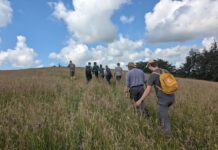
Natural England has published (on 1 August) the first comprehensive review of the conservation requirements of two groups of beetles in the UK for over two decades, offering a vital insight into what needs to be done to protect dozens of species.
The reviews paint a picture of 143 species of rove and longhorn beetles across England, Scotland and Wales, to help inform the conservation needs of these species.
The findings are intended to help ecologists protect beetles, which are an important food source for many animals and also play a crucial role in the natural world by recycling decaying organic matter.
The reviews are also the first to apply the International Union for Conservation of Nature’s (IUCN) Red List criteria for the assessment of species threat status to these beetle groups, establishing the conservation status of these ecologically important species against international standards.
Allan Drewitt, Natural England Senior Specialist said:
“These reviews are critical to our understanding of these species’ conservation status and their ecological requirements. They reveal how changes in land-use in modern Britain are affecting wildlife and what we need to do if we are to safeguard its future.
“That is why we are working with JNCC and Buglife through the Species Status project to produce these reviews.
“The reports include habitat management measures which landowners and land managers can take to help protect the habitats of these vulnerable species as well as a wide range of other wildlife.”
Craig Macadam, Conservation Director with Buglife said:
“Recent reports have shown that invertebrates are facing an extinction crisis. Worldwide, thousands of invertebrate species are declining and many are heading towards extinction.
“Each invertebrate species plays a unique and important role in the web of life but once lost they cannot be replaced. Many invertebrates have incredible life stories yet to be told and we literally don’t know what we are on the brink of losing.
“These reports are incredibly important, providing the information needed to prioritise conservation action and prevent further invertebrate extinctions.”
Monitoring the status and abundance of beetles can provide an important indication of the health of natural ecosystems.
Steps to protect beetles
Land managers and landowners can protect and manage habitats of importance to beetles and other wildlife by:
- managing ancient parkland, woodland, wood-pasture to maintain or increase the availability of standing and fallen dead wood
- maintaining or restore connecting habitats by conserving and planting hedgerows and in-field trees
- restoring open coppice conditions in woodlands
- increasing the number of young open-grown trees in parkland and wood pasture to provide the ancient or veteran trees of the future
- providing a continuity of traditional management such as the annual cutting of wetland vegetation and providing vegetation litter heaps
Natural England is the government’s adviser for the natural environment in England and protects habitats that support invertebrates including through notifying Sites of Special Scientific Interest (SSSI) and National Nature Reserves (NNRs).







